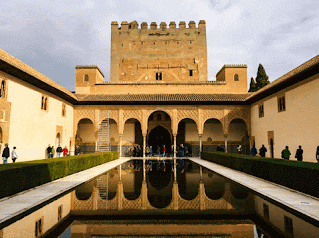Filming fireworks:
• Find a good position where people won't get in the way.
• A tripod is a good idea if you are planning on shooting for more than 5 or 10 minutes. You will also be able to enjoy the display yourself more if you have a tripod.
• Wide-angle shots usually work best.
• If there is a lot of fireworks happening, don't try to chase them all. Concentrate on the main area of action.
• Don't worry too much about normal framing rules (such as the rule of thirds) unless you are framing the fireworks with something else, such as a stadium or staging area. Mostly the display will look fine if it just fills up the frame.


















.gif)


























